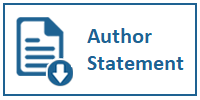The Anatomy of Conflict in Neglected Tropical Disease Treatment on Social Media
DOI:
https://doi.org/10.31937/ultimacomm.v11i1.1109Abstract
Cases of snakebite resulting casualties have been found almost all over the world. In Indonesia, there
is only a few official information about them. However, the fact shows that the number of fatalities
in Indonesia is considerably high. Approximately, more than 100,000 snakebite victims per year have
been reported. The sparse data is caused by the lack of serious attention from all parties, including
the government. As a result, there are so much misinformation and confusion regarding the handling
of snakebites amongst communities, including physicians. Snakebite Accident Indonesia is the only
informational service about snake bites available on social media platforms. The service in a format
of the Facebook closed group is the source of information that referred the most by snakebite
victims. However, communication conflicts frequently happen because of the heterogeneous of this
group where the members came from a variety of backgrounds and understandings. This
phenomenon becomes the main interest of this study because the conflicts have affected the crucial
efforts to handle snake bites that hang the life of people on a thread. By implementing the case study
method, this research raises the anatomy of the communication conflict. The results indicate the
involvement of primordialism, socio-cultural, economic, and psychological problems within the
conflict. To overcome this problem, a communication system, especially concerning health issues, is
needed to bridge the dispute. The need is crucial because the conflicts must be minimized to support
continuous efforts of educating people.
Keywords: communication conflicts, snake bites, facebook, world health organization, health
communication
Downloads
Downloads
Published
How to Cite
Issue
Section
License
Ultimacomm Jurnal Ilmu Komunikasi allows readers to read, download, copy, distribute, print, search, or link to its articles' full texts and allows readers to use them for any other lawful purpose. The journal allows the author(s) to hold the copyright without restrictions. Finally, the journal allows the author(s) to retain publishing rights without restrictions
1. Authors are allowed to archive their submitted article in an open access repository
2. Authors are allowed to archive the final published article in an open access repository with an acknowledgment of its initial publication in this journal















